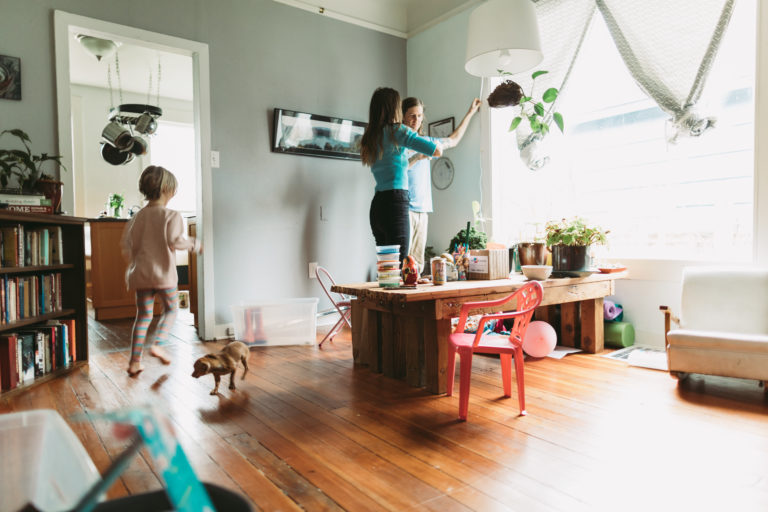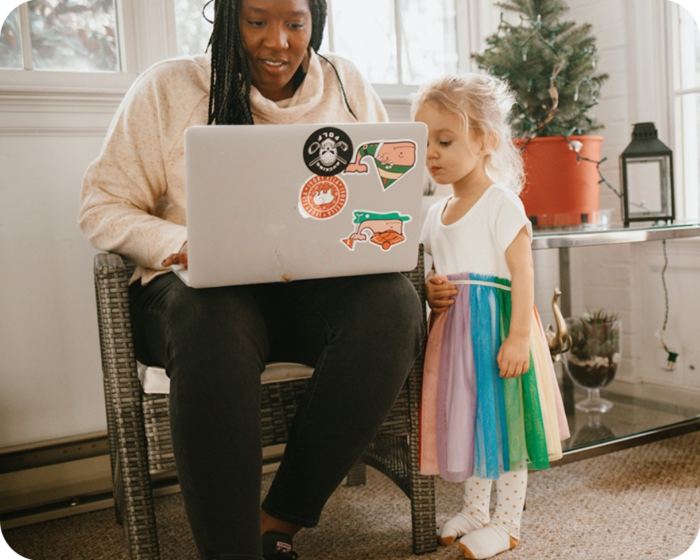Staying inside this winter? Put the time to good use by sprucing up your home decor!
Not sure where or how to start? Here are a few ideas to get you started:
Do more with what you have
You may think the living room is only for the TV and the bedroom only for sleeping, but the pandemic gave us all an opportunity to make more use of the space we have.
The “open space concept,” where a singular area has multiple uses, grew in popularity in recent years. Our living rooms, bedrooms, and dining areas now double as home offices, workout areas, and classrooms.
“A spacious living room is an ideal location to place a desk, allowing the space to be easily separated as an office [or] classroom,” explains Luciana Fragali, owner of Design Solutions. “And an open-floor kitchen with a long spacious island can be a quick solution that can serve as both a dinner table and a workstation.”
To keep a room from looking messy, group furniture together and give them a focal point, like an eye-catching light fixture.
Emily Deaton, a financial journalist at Let Me Bank, recently repainted a pine dresser in whitewash and teal to create a focal point.
“Being able to upcycle something is good for the environment and saves money,” she adds.
When it comes to lighting larger spaces, try putting floor lamps the corners and adding small fixtures to side tables. For something more permanent, consider wall sconces with dimmer switches, suggests Jen Stark, founder of Happy DIY Home.
Freshen your look
“A great indoor home decor project for the late winter/early spring is to update your fabrics,” says Brandi Andrews, founder and CEO of National Air Warehouse.
Andrews, who works in heating, ventilation, and air conditioning (HVAC), says fabrics like curtains, throw blankets, pillow coverings, and rugs add warmth to your home while changing the look of a room.
“If you really want to turn this into a project, try knitting your own throw blanket for the couch to add a personal and warming touch,” she suggests.
Don’t know how to knit? It’s a fairly inexpensive hobby, and winter is a great season to learn, says Marissa Likar, course creator at StitchClinic.com.
“Working on a large knit blanket is not only practical in winter, but also relaxing,” she says. While knitting has a learning curve, the repetitive motions involved can relax your mind or, conversely, a more challenging pattern provides a great distraction.
“Knitting is also a great way to connect with other members of your family,” says Likar, who learned to knit from her mother and is now teaching her own daughter.
Another budget-friendly idea: Wallpapering one or more walls in a room to add both color and character.
Ben Shrauner, who owns SellYourKCHouse.com and buys investment homes in the Kansas City area, recently used wallpaper to update a “drab” bathroom in his own home.
“A few simple changes made our small bathroom seem like a new space,” he says. Since the wallpaper was not long enough to cover the wall top to bottom, Shrauner, a proud DIYer, added crown molding to the ceiling.
Add plants for a final touch
Whether you live in a small apartment or a large house, add an indoor plant (or create a container garden) to spruce up your home. Another bonus? Houseplants help combat seasonal affective disorder (SAD), a form of depression that’s related to changes in the seasons.
New to the whole houseplant thing? Grow your green thumb with our handy guide to houseplants.
Indoor plants offer other health benefits, too, including reducing stress, boosting mood, and enhancing productivity and creativity. They also improve air quality by boosting oxygen levels and removing toxins from the air. Plus, planning for your garden, selecting plants, and taking care of your new additions is an activity you can enjoy with the whole family.
“Humans are naturally calmer when surrounded by natural elements,” explains Dan Bailey, president of WikiLawn Lawn Care. “Putting a succulent or spider plant in your office is a great way to help keep your workday from reaching stress levels that are too high.”
To get started, visit a local nursery or home improvement store for ideas on which plants are best for your home. Plan to consult an expert? Snap some photos of your rooms to bring along.
Need inspiration? Stark, of Happy DIY Home, who is also a master gardener, suggests newbies start with an indoor herb garden to grow spices to cook with: Rosemary, basil, chives, parsley, mint, and dill are great examples. “You can grow them right in the kitchen so they’re on-hand when you need them,” she says.
Pro tip: The lighter the plant or leaf, the more likely it will need more sunlight.
Hang in there, spring will be here soon!
On the market for more home updates? Check out these posts:
- Easy home upgrades for under $25.
- Simple and affordable home decor trends for 2021.




